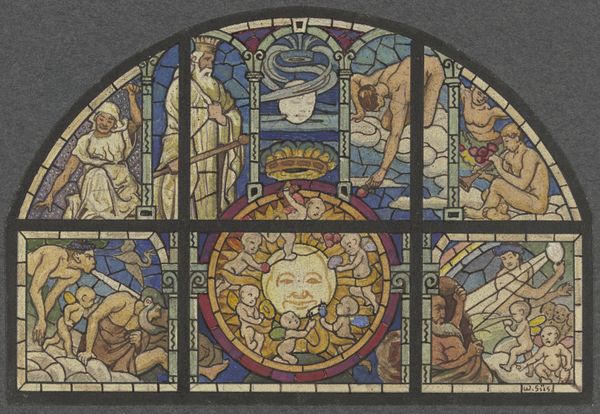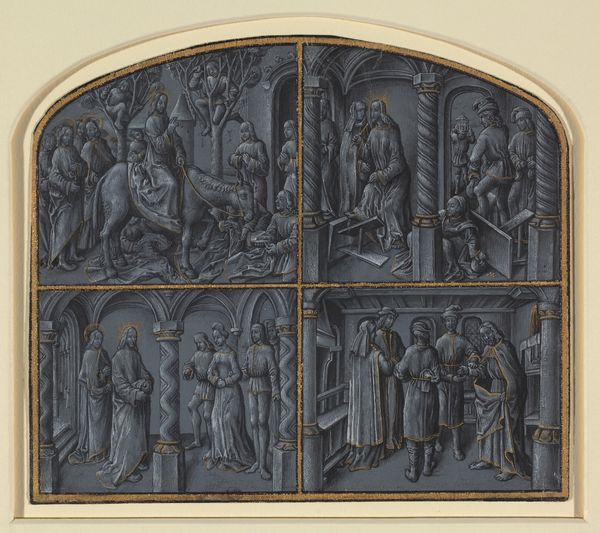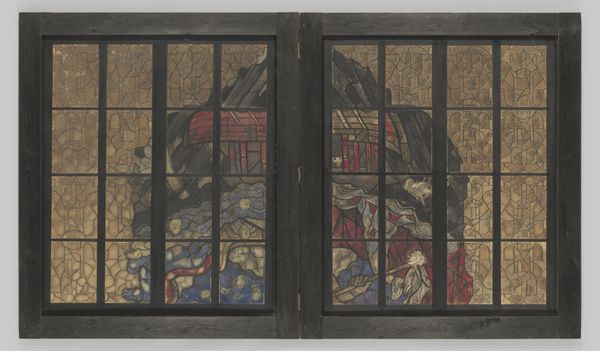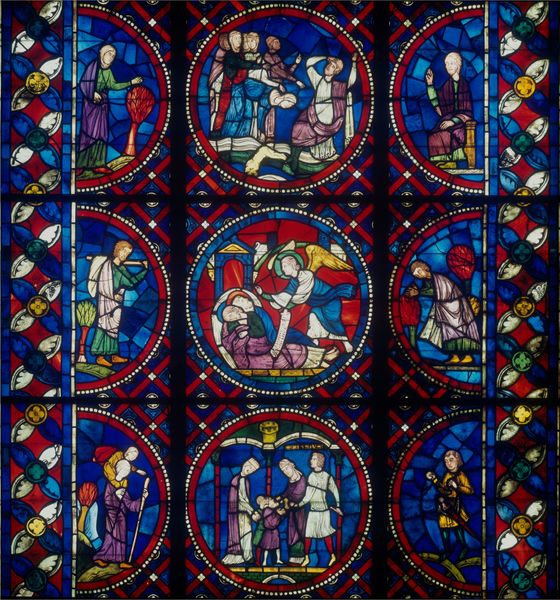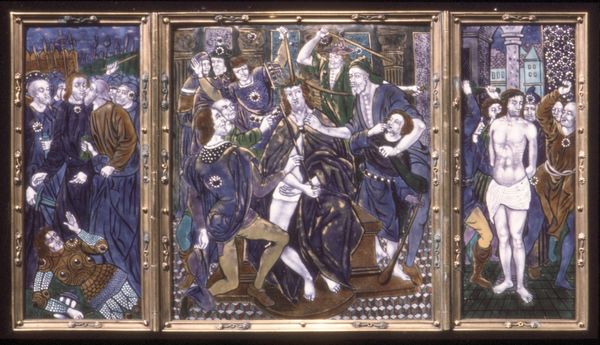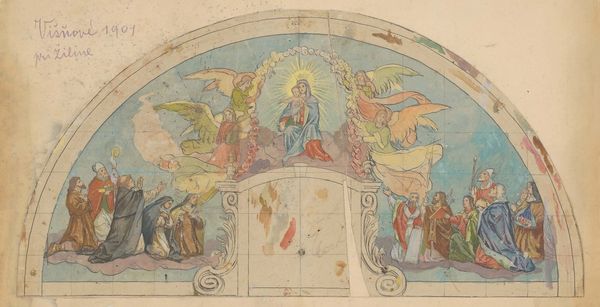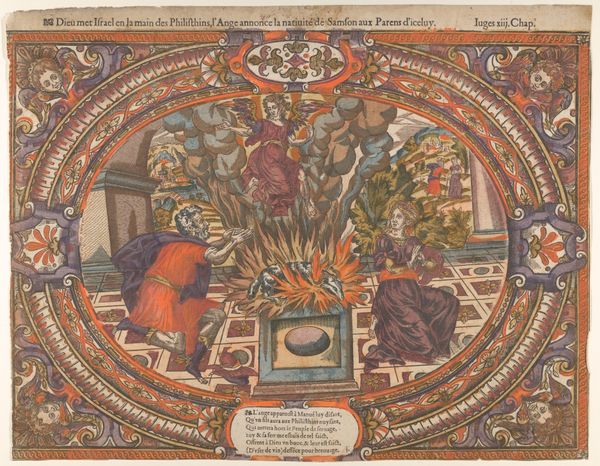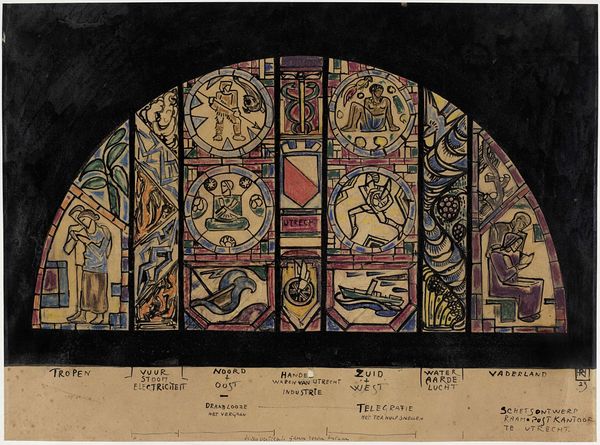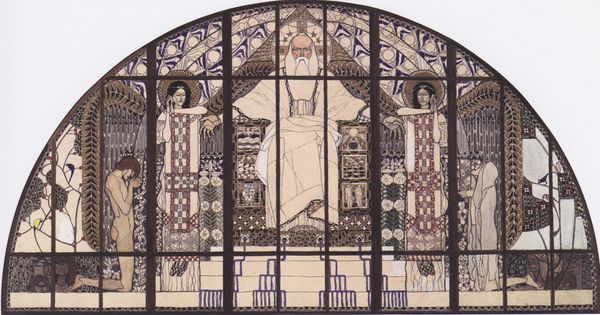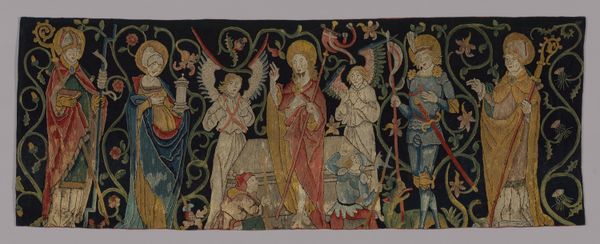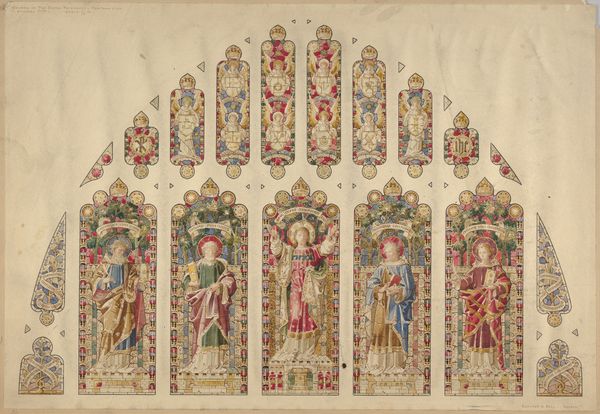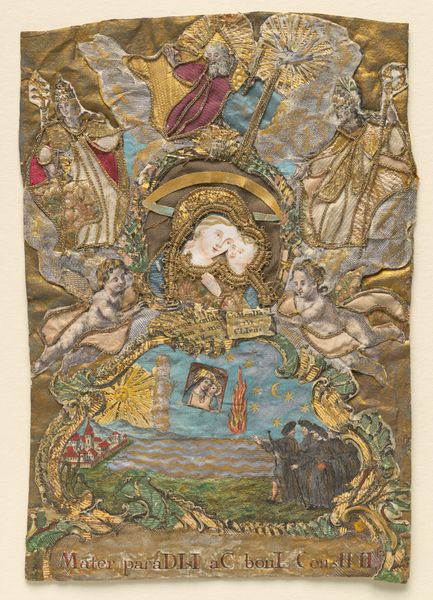
mosaic, drawing, paper, glass, ink
#
mosaic
#
drawing
#
medieval
#
allegory
#
figuration
#
paper
#
glass
#
ink
#
german
#
history-painting
Copyright: Public Domain
Curator: This work, residing here at the Städel Museum, presents a series of scenes focusing on "Der Heilige Michael mit dem Drachen," or Saint Michael and the Dragon. Wilhelm Süss is credited with creating this stained glass composition, ink, and mosaic drawing on paper. It has a story-book quality to it, and I'm interested in hearing your thoughts. Editor: My initial reaction is that it appears deliberately stylized, like a tapestry attempting to break free from the conventions of medieval illumination, almost proto art-deco. What's striking is the combination of fragility in the materials - paper, glass, and ink - and the intense themes of cosmic struggle, judgement, and domination portrayed within each frame. Curator: Indeed, the history of stained glass within sacred spaces imbues the work with inherent authority. But considering this is not an original medieval window, how does it engage with that legacy? The very choice of Saint Michael, who embodies divine justice and order over chaos, places it firmly within the canon. Süss seems to want to reinforce the power of those symbols. Editor: Yet it presents these symbols in a self-aware, almost critical way. This isn’t simply repeating a traditional narrative. Take the figure of Saint Michael himself. He holds scales and a sword, poised above a writhing dragon. It invokes power, but also acknowledges a balance and potential subversion of traditional roles of male domination over feminine power as embodied in the figure of the serpent. Curator: So you are reading a tension between what could be seen as upholding an existing hierarchy of Christian dominance, while subtly introducing elements of critical engagement? Editor: Precisely. Notice how each panel surrounding St Michael depicts scenes that seem rooted in allegory and historical tropes, further enhancing a sense of grand historical narrative that seeks simultaneously to engage the viewer's social consciousness while reminding them of art history itself. Curator: And that reading certainly opens avenues for understanding Süss' intention. These aren’t simply illustrations but acts of deliberate social positioning and critical observation through art. Editor: It shows that artworks are always complex arguments, reflective and projective in their way of addressing us within shifting cultural landscapes. Curator: Agreed. It seems there is much more here than initially meets the eye, an art history within art itself, beckoning the modern viewer to see beyond established traditions. Editor: Absolutely. Ultimately, artworks like these make us actively negotiate and investigate, fostering a deeper interaction with the layered intersections of power, meaning, and aesthetics.
Comments
No comments
Be the first to comment and join the conversation on the ultimate creative platform.
